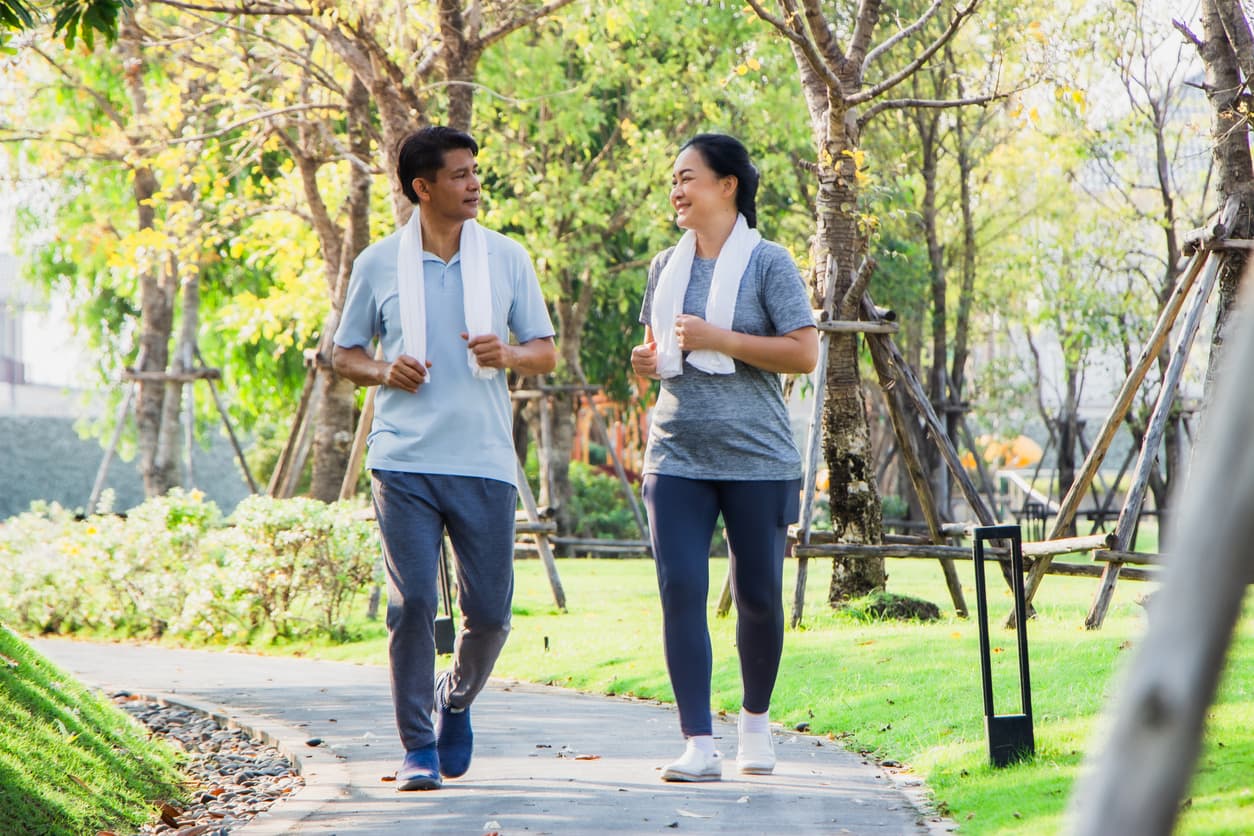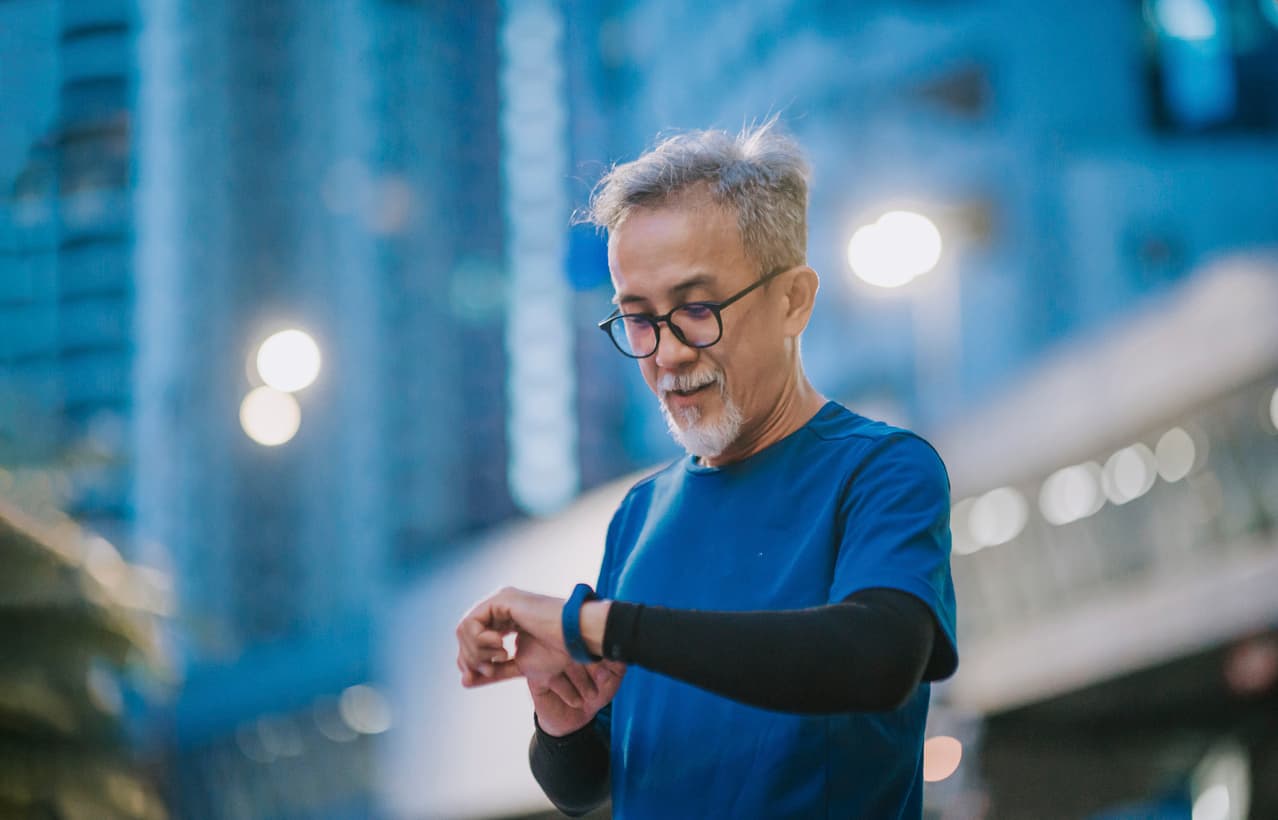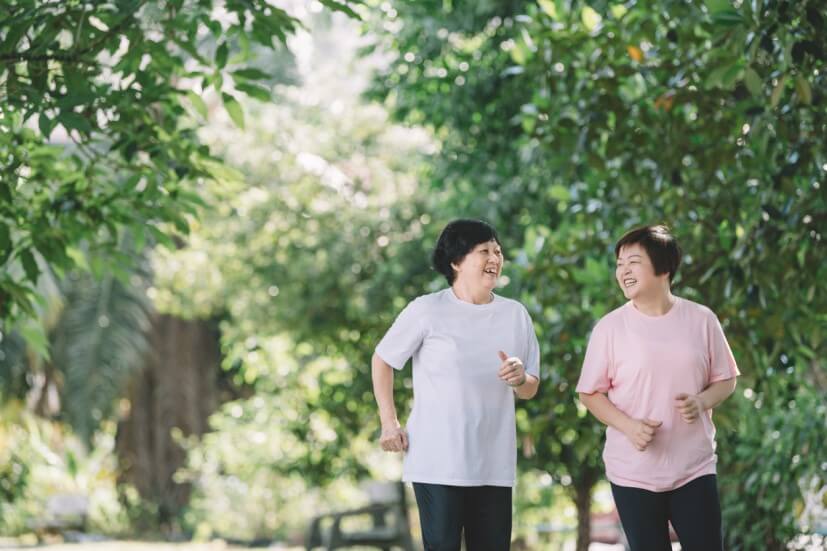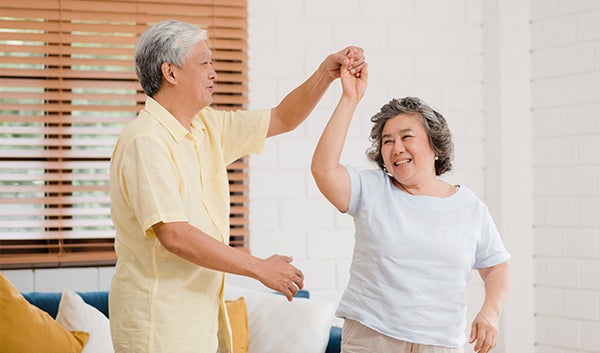How To Adapt Your Workouts to Age-Proof Your Fitness for Seniors
Let's face it, our bodies aren't quite as invincible as they were in our youth. You may have been pretty nimble and agile in your twenties. Past your 50s, however, you might experience a natural decline in muscle mass, flexibility, and bone density. This can manifest in a decrease in strength, stamina, and an increased susceptibility to injuries. You might find yourself recovering slower from workouts or notice a slight decrease in your balance and coordination.
Adapting your exercise routine to address these realities is key to maintaining mobility, independence, and overall well-being as you age into a senior. By incorporating safe and effective exercises, you can continue to enjoy an active lifestyle and all the health benefits that come with it.
Step 1: Modify Exercises For Your 50s And Beyond
As we step into our 50s, our exercise priorities naturally shift, and prioritising low-impact cardio becomes increasingly important. As our bodies become more susceptible to wear and tear, high-impact activities like running can put stress on your joints. Swimming, cycling, brisk walking, and water aerobics are all excellent choices for maintaining cardiovascular fitness while minimising impact.
By that same token, a strong core improves your balance and posture, reducing stress on certain bones and joints, which in turn lowers your risk of osteoporosis and fractures. Here are a couple of core-strengthening exercises you can easily incorporate into your routine as you get older:
- Plank Variations: Start with a basic forearm plank, ensuring your body forms a straight line from shoulders to ankles. Hold this position for 20-30 seconds, gradually increasing the duration as your core strength improves. For a gentler option, perform the plank with your knees on the ground.
- Seated Leg Lifts: Sit on a chair with your feet flat and spine straight. Slowly extend one leg out straight and hold for a few seconds, then lower it back down without touching the floor. Repeat 10-15 times per leg. This exercise strengthens the core and improves lower limb stability.
- Bird-Dog: Begin on all fours, ensuring your hands are directly under your shoulders and knees under your hips. Extend one arm and the opposite leg simultaneously, keeping both straight and level with your body.
Hold for a few seconds, then switch sides. This exercise enhances balance and core strength.
Special Considerations for Seniors (60s and older)
Elders in their 60s and beyond will benefit from incorporating additional safety measures into their exercise routine. Here are a few considerations to help prevent falls and injuries for seniors:
- Warm-up and cool down: Always begin your workout with a light warm-up to prepare your muscles for exercise. End with a cool-down to help reduce muscle soreness.
- Focus on balance: Balance exercises like heel-toe walking or standing on one leg can help improve stability and reduce your risk of falls.
- Wear proper footwear: Supportive shoes with good traction are essential for maintaining balance and preventing slips.
- Listen to your body: Don't push yourself too hard. Take rest days when needed, and don't hesitate to modify exercises if you experience any pain.
Strength training techniques may also need to be adjusted to accommodate age-specific limitations. Here are some tips:
- Focus on form over weight: Use lighter weights and focus on proper technique to avoid injury.
- More repetitions, less weight: Instead of lifting heavy weights for a few repetitions, try doing more repetitions with a lighter weight. This will help maintain muscle strength without putting undue stress on your joints.
- Incorporate functional exercises: Exercises that mimic everyday movements, such as lunges or step-ups, can improve your balance and coordination and help you stay strong for daily activities.
Step 2: Integrate Technology and Tools
1. Trackers and Smartwatches
Technology can be a great asset in your fitness journey as you age. The Health Promotion Board (HPB) gives eligible Singaporeans free fitness trackers to help track useful metrics related to your fitness joruney such as heart rate, steps, and sleep duration. Download the Healthy 365 app, tap "Book Appointment" > "Collect a HPB fitness tracker" to check your eligbility for a free fitness tracker now.
Additionally, the Healthy 365 app helps you discover programmes, resources, and other features to help you embrace a healthier lifestyle for overall wellbeing.
- View your health-related lifestyle data at a glance - track your daily physical activity and sleep duration woith a compatible wearable and use the meal log tool to monitor your daily calorie intake
- Participate in challenges and programmes that are recommended to you (e.g. Live Well, Age Well) and book activities including a wide variety of workout classes and hands-on health workshops
- Enjoy access to informative resources and partner programmes to support your journey to a healthier lifestyle
- Be rewarded for taking healthier actions - use your Healthpoints to redeem from a catalogue of lifestyle rewards
2. ActiveSG Community Gyms
ActiveSG provides affordable access to a network of community gyms across the island. These gyms offer a variety of equipment and programs, including dedicated zones and machines specifically designed for seniors. These senior-friendly equipment often focus on low-impact exercises that strengthen your joints, muscles, and increase your range of motion.
The best part? ActiveSG gyms are conveniently located throughout the heartlands, making them easily accessible for most residents. With a short walk from home, you can be on your way to a healthier you!
3. Fitness Corners
While neighbourhood fitness corners may not have extensive weight training options, they offer a variety of stations that can be highly effective for seniors. These stations utilise your own bodyweight for resistance, helping to improve mobility, maintain strength, and enhance overall fitness.
The lack of stackable weights also doubles as a safety advantage for older adults, as it eliminates the risk of overexertion or improper lifting techniques associated with heavier weights.
4. Home Equipment
Having basic exercise equipment at home can make sticking to your workout routine even more convenient. Here are some equipment suggestions for enhancing your home exercise routine:
- Resistance bands: These versatile bands come in varying resistance levels and can be used for a wide range of exercises targeting different muscle groups.
- Balance balls: Balance balls challenge your core stability and can be used for exercises that improve coordination and flexibility.
- Light dumbbells: Light weights can be used to add some resistance to your workouts and help maintain muscle tone.
Step 3: Create a Sustainable Workout Plan
As you age, it's important to develop a fitness plan that adapts to your changing needs. While regular physical activity remains crucial, you may need to adjust the intensity and duration of your workouts. Listen to your body and incorporate more rest days between workouts to allow your body time to recover.
So, how much exercise is right for you? Aim for at least 150 minutes to 300 minutes of of moderate-intensity aerobic physical exercise per week. This could be broken down into 30-minute sessions, five days a week. In addition, do a mix of physical activity, especially strength, balance and flexibility exercise at least 3 days a week.
Don't forget the importance of stretching! Daily stretches can help improve your flexibility and reduce your risk of injury. Warm-ups and cool-downs before and after each exercise session is also important.
Even if you can't manage a full 30-minute workout every day, a short walk or some gentle stretches are still beneficial. The key is to find an activity you enjoy and incorporate it into your daily routine.
Community Group Exercise Sessions
Health Promotion Board offers a variety of on-ground group exercise sessions near your homes like Move It, Feel Strong, Steady Lah and Rolling Good times. These sessions are specifically designed for older adults, and aims to improve your strength, balance and flexibility!
The best part? These activities are free, and you can simply book on the Healthy 365 app.
Step 4: Listening to Your Body: The Key to Age-Proof Fitness
While consistency is key, pushing yourself too hard can lead to overtraining and injuries. Pay attention to your body's signals. If you experience persistent pain, excessive fatigue, or a decrease in motivation, it might be a sign you need to adjust your workout intensity or duration. Don't be afraid to take rest days and allow your body adequate time to recover.
Rest and recovery are just as important as exercise for maintaining your fitness and overall well-being as you age. Don't be afraid to modify exercises or take breaks when needed. The goal is to feel challenged yet energised, not exhausted or in pain.
Stay Fit In Your Senior Years
By incorporating these age-appropriate modifications and safety tips into your exercise routine, you can continue to enjoy the countless benefits of physical activity well into your golden years. Regular exercise can help you maintain a healthy weight, improve your balance and coordination, reduce your risk of chronic diseases, and boost your mood and energy levels.
Most importantly, embracing an active lifestyle allows you to age gracefully and maintain your independence for longer. Income Insurance offers affordable personal accident plans such as SilverCare insurance, that can provide valuable financial protection in the event of an accident.
SilverCare offers coverage against medical, home-care services, rehabilitation and caregiver training expenses incurred due to an accident, giving you the peace of mind to focus on staying active and enjoying your life to the fullest:
- Comprehensive coverage for recovery care in event of accident or covered infectious disease such as home care services and rehabilitation. If you suffer a serious permanent disability1, receive coverage for home modification expenses, home cleaning service and caregiver training expenses2.
- Renewable for life3 with entry age from 50 to 75 and no medical check-up is require
- Get up to $12,0004 hospitalisation expenses coverage due to an accident or covered infectious diseases and up to $1505 per day during your hospital stay so you can focus on recovering instead of worrying about hefty medical bills.
Explore Income Insurance's personal accident insurance plans today and take a proactive approach to a healthy and fulfilling future!
1 Serious permanent disability means if you suffer 50% or more permanent disability (as shown in the scale of compensation for permanent disability benefit).
2 This plan will pay for the reasonable cost for the training of one caregiver and the training will be conducted by our appointed provider.
3 Your policy will be renewed as long as:
- the eligibility requirements are met;
- claims have not reached the lifetime limit allowed for the respective plans; and
- the full sum insured under the final expenses or permanent disability benefits have not been claimed.
4 This benefit limit is applicable under Platinum Plan.
5 This plan pays up to $150 for each complete 24-hour period of hospitalisation stay under Platinum Plan, up to a maximum of 60 days for each accident.
This article is meant purely for informational purposes and does not constitute an offer, recommendation, solicitation or advise to buy or sell any product(s). It should not be relied upon as financial advice. The precise terms, conditions and exclusions of any Income Insurance products mentioned are specified in their respective policy contracts. Please seek independent financial advice before making any decision.
These policies are protected under the Policy Owners’ Protection Scheme which is administered by the Singapore Deposit Insurance Corporation (SDIC). Coverage for your policy is automatic and no further action is required from you. For more information on the types of benefits that are covered under the scheme as well as the limits of coverage, where applicable, please contact Income Insurance or visit the GIA/LIA or SDIC websites (www.gia.org.sg or www.lia.org.sg or www.sdic.org.sg).
This advertisement has not been reviewed by the Monetary Authority of Singapore.








